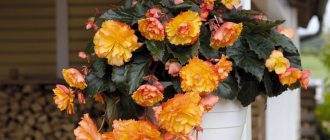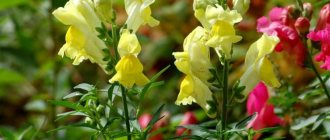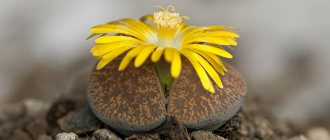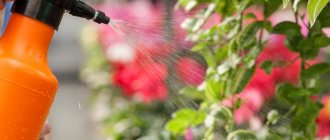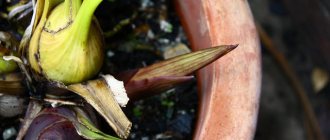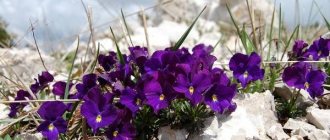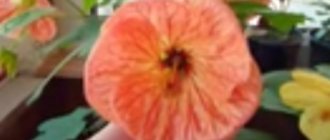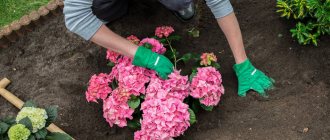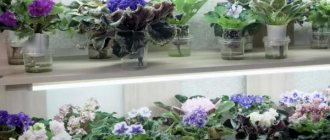What you need to know about eustoma
Eustoma in our rather cool climate is grown as an annual. Although by nature it is a perennial plant. Suitable for growing both in open and protected ground. The Irish rose, as it is also called, blooms for 5-7 months. Lisantius is picky about temperature and lighting. Therefore, early varieties are used for flower beds (so that the cold does not shorten the flowering period).
It is difficult to grow eustoma without additional lighting, so it is usually planted in late February - early March, when daylight hours increase.
Types and varieties of eustoma
Currently, about 60 varieties of eustoma are known. It is customary to grow Russell's eustoma at home. A variety with large flowers is suitable for open ground. There are flower growers who grow both varieties in the garden. And it does not make distinctions between eustoma varieties. Types of Irish rose differ from each other in height, color, flower shape, as well as the duration of flowering.
The most popular varieties of tall eustoma are listed below:
- Aurora. The flower has blue, white, light blue or pink buds and is distinguished by early flowering.
- Echo. It grows up to 70 cm, has spreading stems and large buds. There are 11 color varieties of this variety grown.
- Heidi. Reaches a height of 90 cm, characterized by frequent flowering. The variety has 15 color varieties.
- Flamenco. The tallest and most picky variety, which can reach 90-120 cm. Large flowers have many shades.
The following varieties are suitable for planting eustoma at home:
- Mermaid. A low branched plant, stems 12-15 cm long, small flowers can be white, blue, pink or purple.
- Little Bell. Reaches a height of 15 cm and does not need clothespins, has simple funnel-shaped cups of various shades.
- Eustoma Fidelity. A white flower up to 20 cm high, on which numerous simple buds are arranged in a spiral.
- FloridaPink. A variety that has pink flowers that form a bouquet of regular shape.
Lisianthus is one of the most beautiful garden flowers and if grown correctly, it will not only not create unnecessary difficulties, but will be pleasing to the eye.
Choosing a pot/container
You can grow indoor eustoma in a permanent pot to save yourself the need to pick.
If you plan to transplant it into a flowerbed in the future, you will need 3 types of containers:
- A plastic rectangular container with holes in the bottom - for germination.
- Plastic cups - for diving.
- 0.5-liter plastic glasses or peat pots (they do not need to be removed when transplanting to a flowerbed) - for transferring.
Caring for eustoma in open ground
From the moment you plant it, growing this beautiful plant will be easy. Soon it will bloom and will bloom almost until frost. The beauty of flowers will justify all our dances around seedlings a hundredfold. In principle, you can skip all these difficulties altogether and immediately buy ready-made seedlings. If you live in a warm region, then at the end of summer radically trim the eustoma so that two pairs of leaves remain on the stump, and in a month it will delight you with new flowers. It is better to place supports near each plant so that the bushes do not fall when they bloom. Not everyone dares to disfigure this beauty with ordinary sticks, and decorative supports for orchids come into play.
frosikFORUMHOUSE member
I didn’t have the courage to tie such beauties to sticks, so I used holders for orchids, somehow they still look nobler and more delicate.
Two weeks after planting in the ground, the eustoma is fed with complex fertilizer and then the feeding is repeated twice a month.
How to dive and transfer
Do not be alarmed if the seedlings, at first glance, have stopped growing. They just grow roots.
Picking is carried out immediately after the appearance of the first pair of leaves. Together with the earthen lump, I transfer them into special containers for diving, which we talked about earlier. It is important not to deepen the root collar - it should remain at the same level as before picking.
After transshipment, the seedlings are watered with a solution of Fundazol. Feed once every 15 days. To do this, use potassium- and phosphorus-containing preparations. Water only when the top layer of soil begins to dry out.
When the risk of frost completely disappears, you can replant the plant in open ground or a permanent pot. The procedure is no different from the diving process. It's better to do it in the late afternoon.
In the Becker store you will find a large assortment of flower seeds.
From us you can buy seeds of biennial flowers, seeds of annual flowers, perennials and indoor plants. Author: Natalya Palamarchuk
How to care for eustoma seedlings
Eustoma seedlings are very tiny, and they require extremely careful treatment.
Oshala
If you simply water the seedlings from above, they will most likely die, because a drop of water knocks over the young eustoma and mixes it with the ground.
You need to water the seedlings very carefully; It is generally recommended to reduce watering after germination, and it is advisable to reduce the temperature. Be prepared for the seedlings to grow slowly.
Kota07FORUMHOUSE user
Probably no other plants have such small shoots. I looked at it with a magnifying glass... Here in the photo they were one month old (17.01), two months old (20.02) and now - finally (pah-pah), they began to grow before our eyes.
Eustoma does not tolerate picking well, and it is recommended to do it only when two, or preferably three, pairs of true leaves appear. Seedlings are planted in separate cups or peat tablets. Then you will have to be patient again, now for three months. After this period, the plant is carefully transferred to a large pot for growing indoors, or together with a lump of earth, carefully so as not to damage the root system, it is planted in the garden (the distance between plants should be 15-20 cm). Since eustoma, as our flower growers say, is “very southern,” it is planted after the end of return frosts, at the end of May or beginning of June.
There is no consensus among FORUMHOUSE gardeners on the issue of pinching; some pinch seedlings, others do not; Perhaps the answer to this question can be found experimentally.
nadejda53FORUMHOUSE member
Still, I decided to pinch a couple of bushes for an experiment, and in the photo, the first two that were pinched gave off side shoots, but the third, which was not pinched, did not grow.
AriadnaForumHouse Member
I planted them in crumbs; if I had pinched them, I wouldn’t have waited for them to bloom at all. After the first wave of flowering, it is worth cutting the stem, leaving 2-3 leaves.
In the garden, eustoma loves about the same as a rose: a lot of light or partial shade, moisture and good, fertile soil. If growing indoors, choose a large pot and do not allow any discomfort to the roots.
Step-by-step planting of eustoma with seeds
So, soil is poured into a prepared container, always with drainage holes. It is lightly compacted and sprayed with a spray bottle.
The seeds are laid out on the surface at a distance of 1 cm from each other. The grains are not sprinkled with soil. Shoots must appear in the light. Once again everything is sprayed and covered with film or a transparent lid.
Growing eustoma from seeds can be done on a windowsill on the south side of the house, where the temperature does not drop below +20 degrees. If planting was carried out in the spring, it is important that the seedlings are not exposed to direct sunlight. The greenhouse is ventilated 2 times a day, and as the soil dries, the seeds are watered. It is necessary to remove condensation from the inner surface of the greenhouse daily.
How to dive eustoma
I filled the cassette with air- and moisture-permeable soil: peat substrate from Klasmann. We make holes in the ground with a regular felt-tip pen - it’s very convenient. And we remove the seedlings from the soil using tweezers. The plants are still very small, so you need to act carefully. Having placed the root of the seedling in the hole, we plant a substrate around the stem.
- Planting flowers for seedlings in April
After picking, it is necessary to water the seedlings generously with any means that stimulates the development of the root system: Radifarm, Kornevin or complex mineral fertilizer with a high phosphorus content with the addition of 25 g of succinic acid per 10 liters of solution. Then we place the eustoma seedlings on a rack where the temperature is kept at 20 ⁰C.
Picking eustoma is a simple action, but necessary for the normal development of elongated plants. Carry it out, and eustoma will pleasantly surprise you with its rapid development.
All the best.
Growing conditions: lighting, temperature, soil
In order to grow eustoma from seeds at home, it is necessary to comply with the growing conditions. Namely: lighting, air and soil temperature, air humidity level and substrate.
Lighting
Immediately after emergence, it is necessary to ensure a minimum of 13-16 hours of daylight. Therefore, you need to resort to artificial lighting.
Find out which lamp to choose here: LAMPS FOR LIGHTING PLANTS – TYPES AND TIPS!
Soil and air temperature
The optimal soil temperature for successfully growing seedlings is 13-23 °C. If the air temperature drops below 15 °C at night, the seedlings stop growing.
And if it is above 22 °C, then there is a high risk of the formation of a rosette of leaves and the flower will begin to develop like a biennial plant, i.e. will bloom next year.
Priming
During the first picking, lisianthus needs to be transplanted into more nutritious soil than the one in which the seeds were sown. Garden stores mainly sell peat-based soils (70-80%) with a similar composition.
Therefore, regardless of its name (“Universal”, “For seedlings”, etc.), the main condition for purchase will be a pH level close to 6.0-6.8. The packaging usually indicates pH 5.5-6.5.
Then, if possible, add 1/3 of your garden soil or turf soil, if you find it on sale, to the purchased peat-based soil.
To prepare your own soil mixture, we recommend the following composition: high-moor peat, humus (leaf soil, compost), garden soil and sand – 2:1:1:0.5.
WE ADVISE YOU TO READ:
- WHAT IS THE BEST SOIL TO USE FOR SEEDLINGS?
Examples of different soils with similar composition and pH levels
